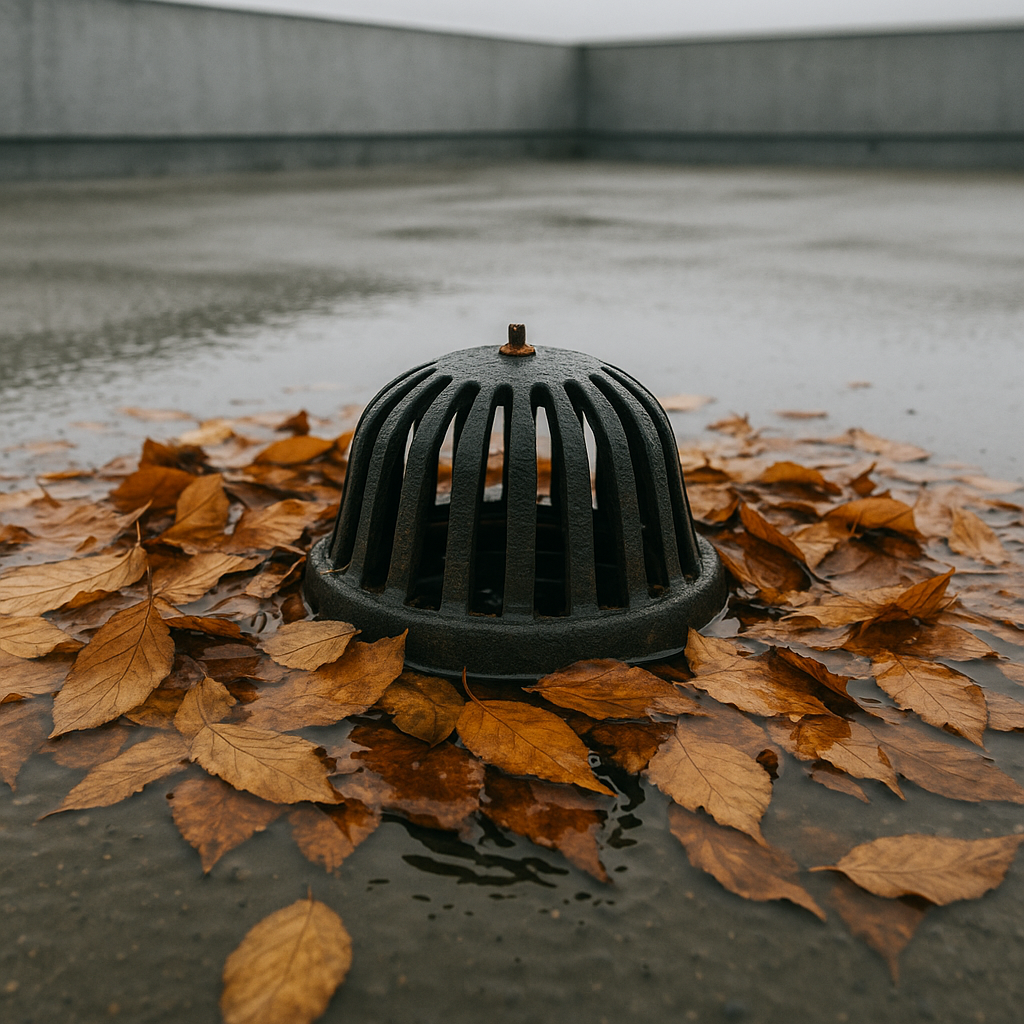In business, a new quarter incites reflection and preparation—reflection on the past quarter and preparation for the next. It’s a logical time to assess movement on business goals and set new ones for the next few months. The change of seasons should also encourage facility managers to take a similar approach—to assess facility conditions from the seasons prior and make a plan for how to tackle repairs and routine, preventative maintenance before heading into a new season.
Your facility’s envelope has just endured months of increased heat and intense UV rays. Depending on where you’re located, your facility may have even weathered rough storms or hurricanes. Fall is an appropriate time to assess damage and remediate issues before winter, which is looming with cold weather, snow and ice (for portions of the country).
Unwanted roof vegetation, ponding, gaps around penetrations and loose flashings are just a few of the issues that could be lurking at the end of the summer potentially leading to water infiltration and subsequent damage to your facility.
Biannual Roof Assessments
A preferred preventative maintenance (PM) program includes biannual roof assessments that allow you to proactively monitor the condition of your roof system and identify any necessary repairs. As you make those repairs, it’s a good time to perform light preventative maintenance work simultaneously.
The ultimate goal of biannual roof assessments that include preventative maintenance is to achieve maximum service life of your roof system. Not only could putting off regular maintenance and repairs void your manufacturer’s warranty, but it also puts your entire roof investment at risk. As a facility manager you must make a choice between valuing and protecting your investment or letting it deteriorate—and then spending more money than necessary on major repairs later.
Biannual assessments ultimately help minimize damage to your roof system and keep costs low. By getting ahead of issues, you can save money and avoid insurmountable repairs or capital replacement.
Proactive Maintenance vs. Reactive Repairs
Getting ahead of issues by performing biannual assessments is considered a very proactive approach to building envelope asset management. For example, taking the time to assess your roof system in the fall before winter hits allows you to anticipate the damage that cold, snow and ice can bring and secure loose flashing conditions, roofing components, and vulnerable seams before they become larger issues.
Unfortunately, we encounter so many facility management teams who run on a reactive maintenance plan in which repairs are taken care of as issues come up—or even put off until the issues become large enough to not be ignored.
So why be proactive?
A report from the Office of Inspector General (OIG) quotes an industry study that found a proactive maintenance program can lower the average life cycle cost of a roof to $0.14 per square foot. A reactive maintenance program—where a roofing professional is called only after problems are discovered—can cost up to $0.25 per square foot. This $0.11/square foot cost difference of proactive vs. reactive maintenance multiplied over thousands or millions of square feet of roof assets across a portfolio adds up quickly.
A proactive PM program is an investment in your facility and can result in significant savings. Implementing a preventative maintenance plan and performing biannual assessments allows you to:
- Lower the average life cycle cost of your roof system
- Extend the life cycle of your roof system
- Re-invest in your investment assets
- Lower total cost of ownership
Download Our Roof Life Cycle Management White Paper to Learn More
This white paper discusses commercial roof life cycle management and how you can properly manage your roof assets with the help of Technical Assurance. Download now!
Fall Preventative Maintenance Checklist
Perform these maintenance-level repairs and checks now to avoid more costly repairs needed after a rough winter.
- Remove debris such as leaves, branches, dirt and trash
- Clear drains
- Clean gutters
- Repair open membrane and flashing seams
- Re-seal deteriorated and open flashing and sealant joints
- Resecure loose metal edging
- Top off pitch pans to allow for watershed
- Trim back surrounding foliage as needed
- Redistribute ballast as needed
- Resecure loose shingles
- Resecure loose metal fasteners
- Record and catalog Maintenance Inspection Forms required to sustain the manufacturer’s warranty
- If under a manufacturer’s warranty, complete warranty notification as outlined in roof system manufacturer’s documentation
Get a copy of our full roof PM checklist!
Contact Technical Assurance for an Assessment
Is your roof system due for an assessment? Contact the Technical Assurance team to set up a consultation and start protecting your investment.

